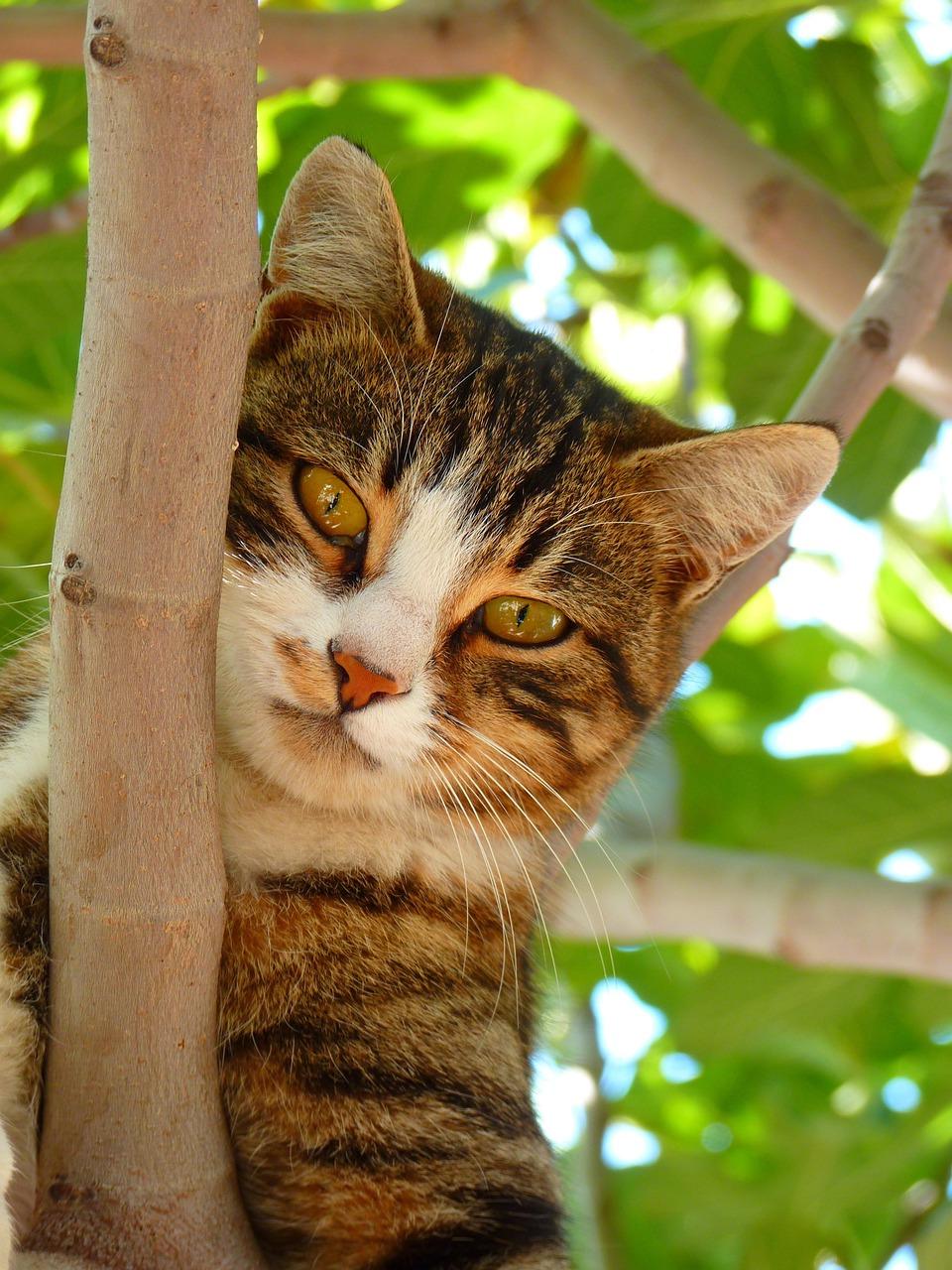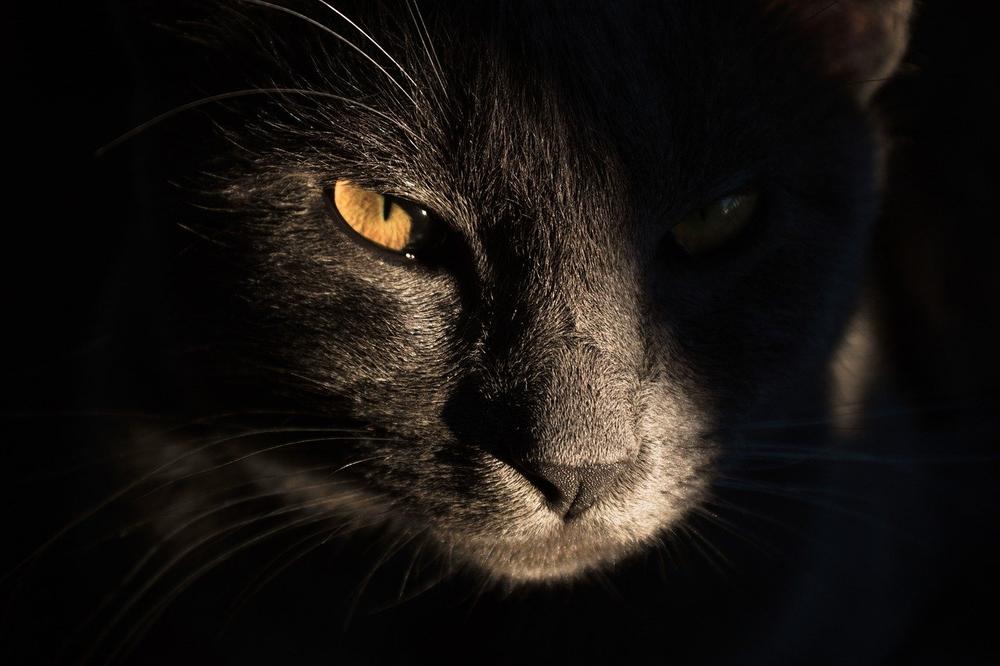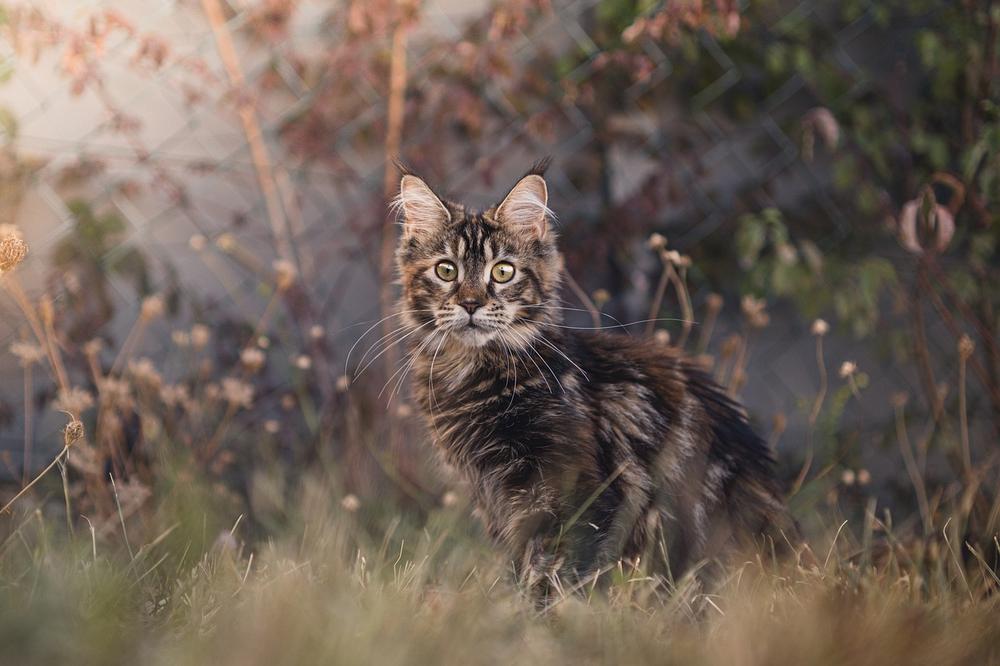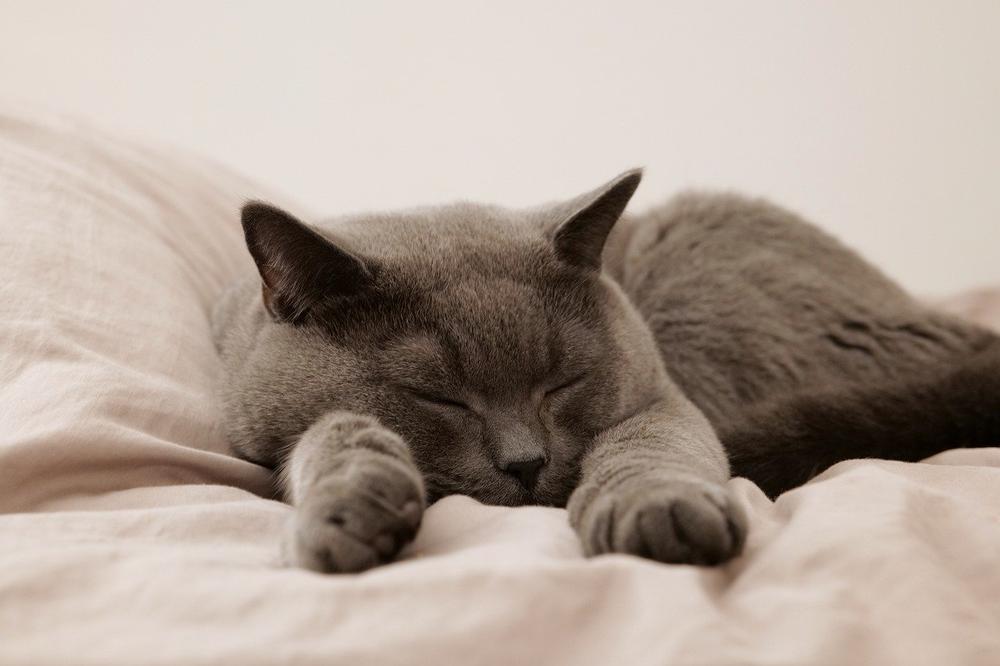Why Is Your Cat Pooping Under Your Bed? (Possible Reasons)

You'll agree with me when I say:
Having your cat poop under your bed is frustrating.
I mean, come on!
You clean their litter box like a champ and this is the thanks you get? 😞
But don't worry.
We're in this together.
Let's dig deeper and uncover some possible reasons for this smelly behavior.
Shall we begin?
Possible Reasons Why Your Cat Is Pooping Under the Bed
There could be several reasons why your cat chooses to poop under the bed:
- Dirty or full litter box: Cats are clean animals and prefer a clean environment. If the litter box is dirty or too full, they may seek alternative places to relieve themselves.
- Unpleasant odor: Strong scents or odors from cleaning products near the litter box can discourage cats from using it.
- Inadequate number of litter boxes: Having only one litter box for multiple cats may lead to competition and stress, causing some cats to avoid using it.
- Stress or anxiety: Changes in their environment or routine, such as a new pet or family member, can cause stress and make your cat choose more hidden spots like under the bed.
- Medical issues: Underlying health problems such as urinary tract infections or digestive issues can result in your cat pooping outside the litter box.
- Litter preferences: Some cats have specific texture or scent preferences, so it's possible that they dislike the litter you're currently using.
- Territorial marking: If there are other pets in the house, especially cats, your cat might be pooping under the bed to mark its territory.
Taking into account these possible variables, you can assist in ensuring your cat's comfort and proper usage of the litter box. 😺

But before you dive into behavioral solutions, you should address any potential underlying health issues your cat may be facing.
Let's explore this aspect further!
Possible Medical Reasons for Improper Elimination
Before you jump to conclusions and start blaming your cat for their improper elimination behavior, let's consider a few possible medical reasons why they might be doing this:
- Your cat could be dealing with some digestive problems. Things like food allergies, intolerances, or gastrointestinal disorders can cause them discomfort while pooping, which in turn leads them to avoid the litter box. Don't worry though, just consult a veterinarian who can help determine if some dietary adjustments or medication can alleviate these issues.
- Improper elimination could also be a sign of underlying health conditions. For example, constipation or arthritis might be making it difficult for your cat to use the litter box properly. A simple vet checkup can go a long way in identifying and addressing these issues.
- Believe it or not, elderly cats can develop dementia, and that can mess with their behavior and training. So before you start scolding your senior feline friend, take them to a vet who can rule out any medical conditions first and then address any behavioral concerns.
- Another possibility is urinary tract infections. These can make cats exhibit improper elimination behaviors because they're experiencing discomfort. By conducting thorough examinations, a veterinarian can confirm or rule out this issue.
- Lastly, don't forget about gastrointestinal problems. Sometimes, a cat's digestive system just isn't functioning properly, and that can cause them to go potty outside the litter box. So going back to my earlier advice, definitely consult a vet who can help identify and treat any GI issues.
When you're dealing with improper elimination problems, the most important thing is to prioritize your cat's welfare and seek professional guidance from a veterinarian.
Your furry friend deserves the best care possible. 🐱
Creating a Vertical Environment to Reduce Stress and Anxiety
Vertical spaces are crucial for your cat's well-being
You know, cats absolutely need vertical spaces in their environment.
It makes them feel safe and secure because they can escape any perceived threats and keep an eye on what's happening around them.
But here's the thing:
If your home doesn't have enough places for them to climb and perch, it can cause stress and anxiety in your furry friend.
And trust me, you don't want that!
Here's how you can help reduce stress and anxiety in your cat
So, what can you do about this?

Well, there are a few things you can try.
- Introducing new pets gradually and under controlled circumstances: If you're planning to bring another pet into the household, take it slow and introduce them bit by bit. This will minimize any potential stress they might cause to your cat.
- Helping your cat get used to changes: Cats can be easily stressed by changes in their routine or surroundings. So, spend some time gradually exposing them to these changes in a positive and reassuring way. They'll appreciate it!
- Giving your cat a break when needed: Sometimes, your cat might just need a breather from a stressful situation. Consider asking a trusted family member or friend to take care of them for a short period. It'll give your cat some much-needed downtime and help reduce their stress levels.
Effective solutions for relieving stress
Now, if you're looking for quick and effective ways to calm your cat's stress and anxiety, you might want to consider using pheromone sprays or diffusers. These products contain synthetic versions of the natural pheromones produced by cats.
They've been proven to effectively reduce behavioral issues linked to stress and anxiety.
Providing plenty of vertical spaces, introducing new pets gradually, helping your cat adjust to change, and utilizing pheromone products can really make a difference in creating a stress-free environment for your feline friend.
Trust me, a happy cat means a happy you!
And here's another thing I want to mention...
Cats may also poop under the bed as a way to mark their territory.
But don't worry, there are scent-based deterrents that can help discourage this behavior!
Understanding the Territorial Nature of Cats and Their Pooping Patterns
Cats have a finicky relationship with scents. Some smells just don't sit well with them, causing the feline fiends to claim your bed as their pooping palace.
To prevent this reeking relay, try scent-based deterrents.
Citrus sprays or vinegar can send cats sprinting in reverse at the mere whiff. But why do they choose that spot under the bed?
It's all about territory, my friend. Cats are masters of marking their turf, and nothing says mine like a strategic poop placement. So, spray away those offensive odors and show those territorial felines who's really in charge!
Creating a Cat-Friendly Environment to Reduce Stress and Anxiety
Creating a cat-friendly environment requires understanding their natural instincts and providing the right conditions for them.
Here are some practical tips to reduce stress and anxiety in cats:
- Introduce changes gradually - Whether it's new pets or people, allowing your cat time to adjust can minimize stress and prevent litterbox avoidance.
- Provide vertical spaces - Cats love climbing and perching high up. Invest in cat trees or shelves to give them options for vertical exploration.
- Interactive toys and playtime - Engaging your cat in play and exercise helps fulfill their instinctual needs and keeps them mentally stimulated.
- Use scents as deterrents - Certain scents like peppermint or orange can discourage marking in undesirable places.
- Extra support during transitions - The addition of a new baby or pet can be stressful for your cat. Offering reassurance and attention during these times can help ease their anxiety.
To promote the overall well-being of your cat and minimize stress, design an environment that takes into account their innate behaviors and needs.
And of course, if you're dealing with the issue of your cat constantly pooping on the floor in the same spot, I have just the solution for you.

In my blog post My Cat Keeps Pooping on the Floor in the Same Spot, you'll find valuable insights and practical tips to put an end to this frustrating behavior.
I understand how concerned and anxious you must be, which is why I've dedicated an entire guide to help you understand the possible reasons behind this problem and offer effective solutions.
Don't miss out on this essential resource - check out my article to empower yourself with the knowledge you need to solve this issue once and for all!
Understanding and Addressing Behavioral Issues in Cats

If you want to better deal with your cat's behavioral issues, here are ten tips for you:
- Don't scold or punish your cat when they mess up in the litter box.
- Instead, try using positive reinforcement training methods.
- Give your cat a reward right after they use the litter box correctly.
- You can use treats, praise, or playtime as a treat.
- Positive reinforcement is key to reinforcing good behaviors.
- Keep encouraging your cat to use the litter box through reinforcement.
- Also, address other common problems like your cat staring while sleeping.
- Make sure there's a safe and cozy spot for kittens to hide.
- If your cat starts humping things, redirect that behavior towards appropriate toys or activities.
- When introducing your spouse to your cat, take it slow and make sure it's a positive experience.
Both you and your feline companion will experience a more content and harmonious coexistence devoid of behavioral difficulties if you adhere to these instructions.
Ensuring an Optimal Litter Box Environment
To ensure your cats are happy and healthy, it's super key to have a great litter box setup.

Here's what you need to know:
- Keep the litter box nice and clean for your furry friend. Scoop it out every day and give it a good cleaning regularly.
- Avoid using strong-smelling cleaners that might turn off your cat. Their noses are sensitive, so overpowering scents aren't cool.
- Think about what your cat likes. Do they prefer big boxes or ones with a cover? Maybe they're into open designs. Also, consider the position and type of litter they prefer. It's all about finding their purrfect match.
- If you've got more than one cat, give each cat their own litter box. This helps avoid any territorial issues and keeps everyone happy.
- If your cat is going potty in places they shouldn't, try putting some aluminum foil or tape there. Those textures and sounds bother cats, so they'll be less likely to go there instead of the litter box.
- Put some thought into where you place the litter box. Trying different locations, like under the bed or in a quieter spot, could make it more appealing to your cat.
- Consider taking off the lid on covered litter boxes. Some cats feel cooped up and would rather have an open space to do their business.
Your cat will enjoy and regularly utilize the litter box if you adhere to these suggestions.
Providing Adequate Privacy for Your Cat's Bathroom Needs
When it comes to providing adequate privacy for your cat's bathroom needs, you want to make sure they feel comfortable and undisturbed.
Here are some things to consider:
- Offer a covered litter box to give your cat a sense of privacy and security.
- However, keep in mind that some cats may prefer open-sided boxes, as they may feel trapped or anxious in an enclosed space.
- Make sure the litter box is placed in a quiet and secluded area of your home, away from high-traffic areas and loud noises.
- Regularly clean the litter box to prevent any odors or discomfort for your cat. A dirty litter box can be a major turn-off!
- If your cat starts pooping under the bed or in other hidden areas, it might be a sign that they are seeking a more private spot. Consider placing an additional litter box in that area.
- Ensure that the litter box is always easily accessible for your cat. They should not have to climb over obstacles or navigate through narrow spaces to reach it.
- Pay attention to any reactions or signs of distress from your cat while using the litter box. This could indicate discomfort or fear and may require a change in the set-up.
- Lastly, provide a variety of litter options for your cat to choose from. Some cats can be picky about the type of litter they prefer.
Each cat is unique, so pay attention to their individual preferences and adjust accordingly to create the perfect bathroom environment for them. 🐾
Other Pets in the Household
When you have multiple pets, you must consider their needs and make sure they can peacefully coexist. Here are some simple tips to manage other pets in your home while still providing separate spaces for your cat:
- Use baby gates or barriers to create designated areas for each pet during bathroom breaks. This way, your cat can use the litter box without feeling threatened or stressed by other animals.
- Pay attention to anything that might stress out your cat. Keep an eye on noise levels, any confrontations with other pets, and overcrowded bathrooms that might push your cat to find alternative places for their business.
- Consider teaching your cat to use cat doors. This will give them more options to access their litter box or go outside without dealing with potentially stressful situations.
- Keep all pet water bowls clean to minimize the risk of contamination and promote good hygiene for everyone in the house, especially for sensitive cats who need fresh water for their well-being.
By following these strategies, you can create a peaceful environment where all pets can thrive.
Your cat will feel comfortable using its litter box without resorting to other spots.
Remember to prioritize the individual needs of your furry friends so they can live happily and healthily in your home.
Reinforcing Proper Litter Box Training for Cats

Here are 8 tips to help you properly train your cat to use the litter box:
- Always keep a clean and easily accessible litter box for your cat.
- Make sure to scoop the litter box every day to keep it clean.
- Use unscented litter to avoid overwhelming your cat's sensitive nose.
- Place multiple litter boxes in different areas of your home.
- Avoid putting the litter box in noisy or busy parts of the house.
- When your cat uses the litter box correctly, give them consistent praise and rewards.
- If your cat has accidents outside the litter box, don't punish them. Instead, gently guide them back to the litter box.
- In more challenging cases, confine your cat to a small area with the litter box until they consistently use it.
Being patient and using positive reinforcement are key to helping your cat develop good litter box habits.
Summary of Key Tips for Cat Pooping Under the Bed
Key Takeaways:
- Rule out any underlying medical conditions by taking the cat to a vet for a thorough examination.
- Stress or anxiety can lead to cats pooping under the bed; try using pheromone sprays or diffusers.
- Cats may mark their territory by pooping under the bed; use scents as deterrents.
- Understand a cat's natural instincts and provide a safe environment that meets their needs.
- Avoid punishing or scolding cats for improper elimination as it can make the problem worse.
- Consider the size, design, location, and litter type of the litter box to encourage usage.
- Cats may choose to poop under the bed for a quiet and undisturbed space.
- Be aware of factors that can stress out cats and adjust accordingly.
- Retrain cats in litter box usage if necessary through training and confinement.
And that wraps up today's article.
If you wish to read more of my useful articles, I recommend you check out some of these: Why Is My Cat Ignoring Me All of a Sudden, Cat Digging in the Litter Box, Why Wont My Cat Sleep With Me Anymore, and Why Does My Cat Drag My Clothes Into the Litter Box
Talk soon,
-Sarah Davis